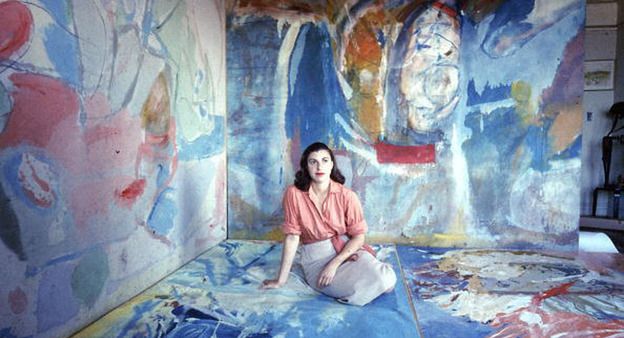I think it was on Sunday, July 21st, 1991 that I learned of Robert Motherwell’s death. He died of a stroke on that prior Thursday, July 18th. He was seventy six years old, not that his longevity is of any consequence in this article, but, a short time before his death, I remember that there had been some criticism of his lines as showing the shakiness of old age by more than one critic, something else to worry about, I thought. On that Sunday, twenty years ago, I saw Motherwell’s death as a heavy loss, a loss for the home team of abstract expressionism-a truly American art movement. Motherwell was the philosopher-spokesman of his generation of painters, post-World War II painters, a generation that knew violence intimately and didn’t sugarcoat it in their work.
Now, 2011 has dealt some final blows to that most American of art movements:
In July of 2011, New York painter, Frank Owen wrote to me via Face Book saying that he could not help but think of me when he heard of Cy Twombly’s death (Frank was artist- in-residence at UNC, Chapel Hill while I studied there in the early eighties). At first, I could not imagine why this event would cause Frank to think of me, and then I recalled the extreme positions that I took in defense of drawing. To defend an abstract artist such as Cy Twombly as being a fine draftsman, who reportedly used to practice drawing in total darkness, seemed ludicrous to some of my peers at the time. In my own defense, and his, I will point to his use of an eraser. One doesn’t make use of an eraser in a drawing unless there is a qualitative judgment at play-either a mark doesn’t live up to the artist’s expectations or the eraser is used to leave a distinctive “mark” of its own on the substrate. Cy Twombly was a draftsman. Cy Twombly used an eraser. Twombly may have “slyly subverted abstract expressionism” as Randy Kennedy points out in his obituary for the artist in the New York Times, July 5th, 2011, but he never wholly abandoned it. Cy Twombly was eighty-three.
The third day of Christmas, 2011 brought to us the sad news of Helen Frankenthaler’s death. Frankenthaler, initially an abstract expressionist painter (and a real slugger), she could be considered the founder of color-field painting. I love this early quote by Helen Frankenthaler: “ I had the landscape in my arms as I painted it. I had the landscape in my mind and shoulder and wrist”. This emphasis on the physicality of painting places Frankenthaler squarely within the abstract expressionist club. Eventually she would begin pouring thinned paint onto the surface of her canvases and by maneuvering the canvas itself rather than a brush, control how the paint would “travel” the surface. It was Clement Greenberg that introduced two painters, Kenneth Noland and Morris Louis (both of whom were a bit lost as to what direction post World War II painting would take) to the work of Helen Frankenthaler in 1953. The two painters were admittedly lacking direction, not knowing where to go with their work, post-Pollock. Greenberg's purpose in introducing them to Helen was to show them the direction that painting could take. Now when we think of color field painters we think of Louis, but he owes a lot to Helen Frankenthaler and Clement Greenberg.
Helen Frankenthaler was eighty-three.
Just saying, I know from whom the line leads licentious and the beautiful color fields flow. Peace.
_______
Bruce Nellsmith received his MFA from the University of North Carolina at Chapel Hill and his BFA from the University of Georgia in Athens. He is currently the Art Department Chairman and a Professor of Art at Newberry College where he has taught for nineteen years. He has been selected for numerous exhibitions in the North and Southeast and has been the recipient of local and national awards in painting and drawing competitions. Bruce Nellsmith has been listed in Art in America’s International
Index to Artists several times since 1985. His work is included in many private, state, and public collections throughout the country and Canada. His work has been exhibited in the South Carolina State Museum, featured on ETV, reviewed many times by the State Newspaper, Carolina Arts, as well as Art Papers of Atlanta, and has been exhibited in group shows twice in New York at the Limner Gallery. Nellsmith is represented by City Art Gallery of Columbia, SC, Michael Mitchell Gallery in Charleston, SC, and New Bern Artworks Gallery in New Bern, NC.
Bruce Nellsmith has served as Exhibition Chairman for the South Carolina Watercolor Society, juror for exhibitions across the state, and conducted workshops and evening courses on various studio topics including oil painting, the chemistry and techniques, color, abstraction, and composition in pastels, and life drawing and superficial anatomy for the artist. The artist maintains studios in Edisto Beach, SC and Newberry, SC.




